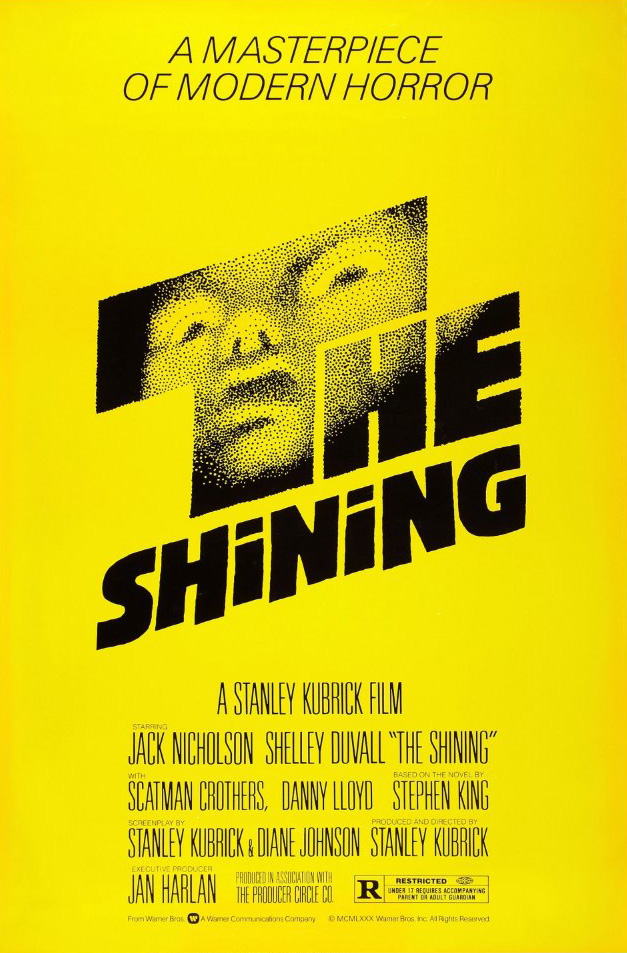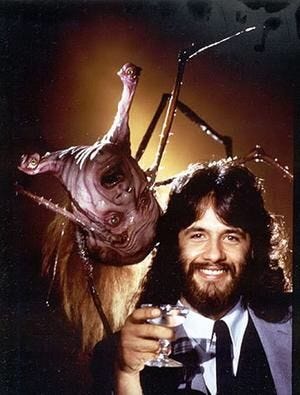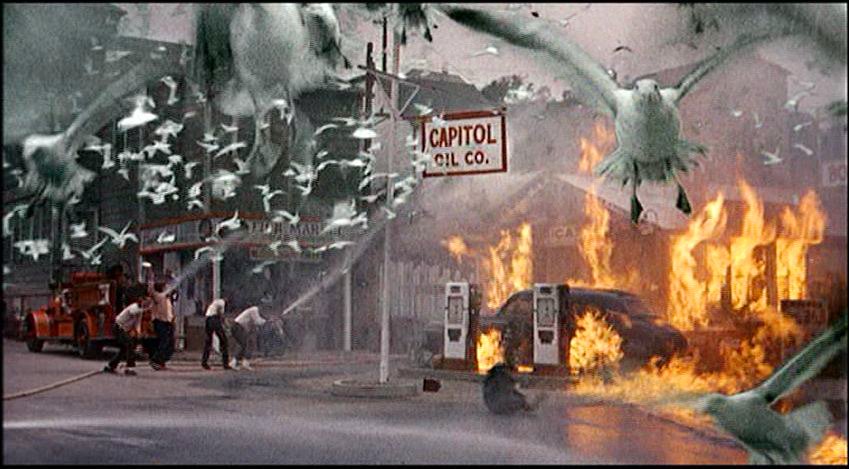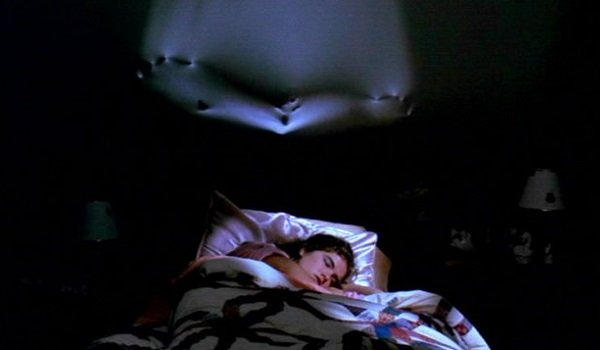Last week, we looked at the Texas Chainsaw Massacre. This week, we go to an extremely well-known example of psychological/suspense horror, the 1980 movie The Shining. Based on a novel from Stephen King, this film was directed by Stanley Kubrick and stars Jack Nicholson and Shelley Duvall as the main couple Jack and Wendy Torrence, as well as Scatman Crothers and Danny Lloyd. The Torrence family (including their young son) travel to a remote hotel for the winter, where Jack will act as caretaker while simultaneously working on a novel. The family soon experiences a variety of threats, both from supernatural forces and from Jack himself.
novel. The family soon experiences a variety of threats, both from supernatural forces and from Jack himself.
One important aspect of this film’s production involves Kubrick’s famously abusive treatment of Shelley Duvall during filming. He reportedly offered her the role before even having the movie’s script, but this favoritism didn’t continue on set; his mistreatment of the actress has been well-documented, and discussed long after the movie was released. Kubrick’s constant “perfectionism” resulted in constantly repeating takes, with many of them taking at least 35 repeats before he was satisfied. Scenes could take up to 3 weeks to complete, which was particularly harmful to Duvall due to the sheer amount of emotional trauma responses required throughout the movie. Stephen King criticized Kubrick’s take on the character as being misogynist; though she was written as an intelligent and fleshed-out character, the director cut out much of her dialogue, reducing her to someone there “to scream and be stupid.” Duvall was kept isolated and often not warned about frightening scenes, such as Torrence breaking a door with an ax– in the film, her scream of fear is a legitimate reaction of surprise. The famous baseball bat confrontation scene took a record breaking 127 takes, which resulted in dehydration, physical injury (from screaming and gripping the bat), and emotional exhaustion. Though she now defends his actions in interviews, many have used this film as an example of historical trends of actresses being mistreated by directors (note this similar event in The Birds).
On a slightly less depressing note, one of the things that made The Shining such a popular movie was its use of newly developed Steadicam technology. It allowed the camera to be stabilized while moving, and was only invented 5 years before the movie came out, making it a relatively new and unseen innovation. One of the most famous uses of this rig occurs in Danny’s tricycle scene, establishing the creepy setting by following him as he rides through the halls of the hotel. Unfortunately, not all of the practical effects were as efficient; since copy-and-paste wasn’t exactly available on a typewriter, Kubrick had his secretary type out the phrase “all work and no  play makes Jack a dull boy” over a thousand times in order to create Torrence’s “manuscript,” which took multiple months.
play makes Jack a dull boy” over a thousand times in order to create Torrence’s “manuscript,” which took multiple months.
In the decades after its release, The Shining has experienced a new wave of popularity, particularly among critics and analysts studying potential messages hidden in its plot and settings. A surprising number of conspiracy theories have arisen regarding Kubrick’s intention with the film; particularly popular theories state that the movie is a metaphor for genocide of indigenous peoples, that it acts as Kubrick’s confirmation of the Apollo 11 moon landing being faked (yes, this is a real theory), that it is meant to represent the tragedy of the Holocaust, or that it is a modern retelling of the tale of Theseus and the Minotaur. Despite these outlandish claims, analyses of The Shining are so extensive and popular that a documentary, called Room 237, was made to summarize and explain them.
As a whole– in a rating that I’m sure would make most horror fans gasp– I would give The Shining a 4/10. Though it’s an incredibly famous movie, and has been the subject of hundreds of deep analyses and studies, I honestly just can’t get into it as much as I’d like. I’ve never considered it particularly scary in any sense, especially compared to other classic horror films like The Thing, and Nicholson’s tendency to over-act definitely ruins the atmosphere of the film for me. However, I would actually still recommend that everyone watches this movie; it may not be my favorite, but its sheer impact on popular culture and psychological horror cannot be understated!
 the corpses of his victims and wearing a human face as a mask. It was also partially inspired by Elmer Wayne Henley, who was the serial killer responsible for the Houston Mass Murders of the early 70s, which claimed almost 30 lives. Finally, the actions of Charles Whitman– who shot a total of 45 people at the University of Texas, killing 14– had some (reported by Hooper himself) influence on the director’s interest in horror films, as he was on the campus at the time of the shooting.
the corpses of his victims and wearing a human face as a mask. It was also partially inspired by Elmer Wayne Henley, who was the serial killer responsible for the Houston Mass Murders of the early 70s, which claimed almost 30 lives. Finally, the actions of Charles Whitman– who shot a total of 45 people at the University of Texas, killing 14– had some (reported by Hooper himself) influence on the director’s interest in horror films, as he was on the campus at the time of the shooting. the brunt of the violence on set; there were multiple mishaps when it came to filming violent scenes, which resulted in her finger being cut open and her passing out after being repeatedly struck by one of the cannibal actors. Production designer Robert Burns (no relation to the main actress) made sculptures of bone and fake skin, as well as hanging several real animal bone decorations around the cannibals’ house to provide atmosphere; though gross, his contributions are truly impressive, and definitely stick out in a low-budget film like this one.
the brunt of the violence on set; there were multiple mishaps when it came to filming violent scenes, which resulted in her finger being cut open and her passing out after being repeatedly struck by one of the cannibal actors. Production designer Robert Burns (no relation to the main actress) made sculptures of bone and fake skin, as well as hanging several real animal bone decorations around the cannibals’ house to provide atmosphere; though gross, his contributions are truly impressive, and definitely stick out in a low-budget film like this one. so called
so called 
 This film was based off of the 1938 novel
This film was based off of the 1938 novel  rubber to simulate bones, flesh and veins– that would then be torn off. Bottin created a fake torso, a prosthetic mask for the stunt actor, and hydraulic jaws for the Norris-Thing, altogether creating a truly unforgettable (and horrifying upon first watch) moment in the film. Unfortunately, his efforts did come with a price; though he allowed some puppets and prosthetics to be made by artists like Stan Winston, Bottin took on most of the workload alone, which resulted in him being hospitalized for exhaustion, pneumonia, and ulcers due to overextending himself. He even chose to live on set for extended periods of time, sleeping in locker rooms or on the film stage. However, despite this toll, his sheer determination to bring life to his vision resulted in incredible practical effects that are still recognized today for their horrifying ingenuity!
rubber to simulate bones, flesh and veins– that would then be torn off. Bottin created a fake torso, a prosthetic mask for the stunt actor, and hydraulic jaws for the Norris-Thing, altogether creating a truly unforgettable (and horrifying upon first watch) moment in the film. Unfortunately, his efforts did come with a price; though he allowed some puppets and prosthetics to be made by artists like Stan Winston, Bottin took on most of the workload alone, which resulted in him being hospitalized for exhaustion, pneumonia, and ulcers due to overextending himself. He even chose to live on set for extended periods of time, sleeping in locker rooms or on the film stage. However, despite this toll, his sheer determination to bring life to his vision resulted in incredible practical effects that are still recognized today for their horrifying ingenuity! Directed by John Carpenter, it stars Jamie Lee Curtis as protagonist Laurie Strode in her first-ever film debut,
Directed by John Carpenter, it stars Jamie Lee Curtis as protagonist Laurie Strode in her first-ever film debut,  The sudden occurrence of the score in the beginning of the movie makes the viewer jump, and its simple eeriness forces a feeling of suspense that continues throughout the film. The cinematography also contributes to this dread, particularly in the iconic opening scene. Filmed in first person, the audience watches from the view of a young Michael Myers in a nearly 4 minute unbroken shot, with his only sounds being heavy breathing before the discordant synth track takes over. We stare into a window, identifying his next victims, before he retrieves a knife and a mask– which distorts both his vision and the camera’s view– and murders his sister Judith. It is only until he has left the house and walked outside that the camera changes, revealing the murderer to be a young boy and giving us our first view (one of the only views) of Myers’ face.
The sudden occurrence of the score in the beginning of the movie makes the viewer jump, and its simple eeriness forces a feeling of suspense that continues throughout the film. The cinematography also contributes to this dread, particularly in the iconic opening scene. Filmed in first person, the audience watches from the view of a young Michael Myers in a nearly 4 minute unbroken shot, with his only sounds being heavy breathing before the discordant synth track takes over. We stare into a window, identifying his next victims, before he retrieves a knife and a mask– which distorts both his vision and the camera’s view– and murders his sister Judith. It is only until he has left the house and walked outside that the camera changes, revealing the murderer to be a young boy and giving us our first view (one of the only views) of Myers’ face. wn of Bodega Bay. As they get to know each other, they discover a strange and ominous new problem– the birds in the town are beginning to act strange, and soon transform into a terrifying threat to the lives of the townsfolk.
wn of Bodega Bay. As they get to know each other, they discover a strange and ominous new problem– the birds in the town are beginning to act strange, and soon transform into a terrifying threat to the lives of the townsfolk. then compiled into another film reel. (I encourage you to read more about this technique if you’re interested– it was also used in the original Mary Poppins!) Though the editing isn’t always perfect, the directors were committed to using actual birds, and almost every scene in the film features real gulls or crows. The Birds also uses different filmmaking techniques– slow pacing and long, ominous silences– to build suspense throughout each scene.
then compiled into another film reel. (I encourage you to read more about this technique if you’re interested– it was also used in the original Mary Poppins!) Though the editing isn’t always perfect, the directors were committed to using actual birds, and almost every scene in the film features real gulls or crows. The Birds also uses different filmmaking techniques– slow pacing and long, ominous silences– to build suspense throughout each scene.
 upside-down version of the room, created a large amount of fake blood, put a hole in the bed, and let loose the waterworks. Perhaps the most infamous example of practical effects, however, occurs as Krueger stalks Nancy in her sleep; the seemingly normal wall distorts, and he seems to try to push through it, leaning over his unaware victim as he infiltrates her dreams. Jim Doyle, the special effects designer, stretched flexible spandex across a hole and had Englund press against it. Sometimes the simplest solutions are the best ones– one of the main criticisms of Nightmare‘s 2010 remake was an overuse of CGI, instead of employing the practical effects that made the original so popular.
upside-down version of the room, created a large amount of fake blood, put a hole in the bed, and let loose the waterworks. Perhaps the most infamous example of practical effects, however, occurs as Krueger stalks Nancy in her sleep; the seemingly normal wall distorts, and he seems to try to push through it, leaning over his unaware victim as he infiltrates her dreams. Jim Doyle, the special effects designer, stretched flexible spandex across a hole and had Englund press against it. Sometimes the simplest solutions are the best ones– one of the main criticisms of Nightmare‘s 2010 remake was an overuse of CGI, instead of employing the practical effects that made the original so popular.